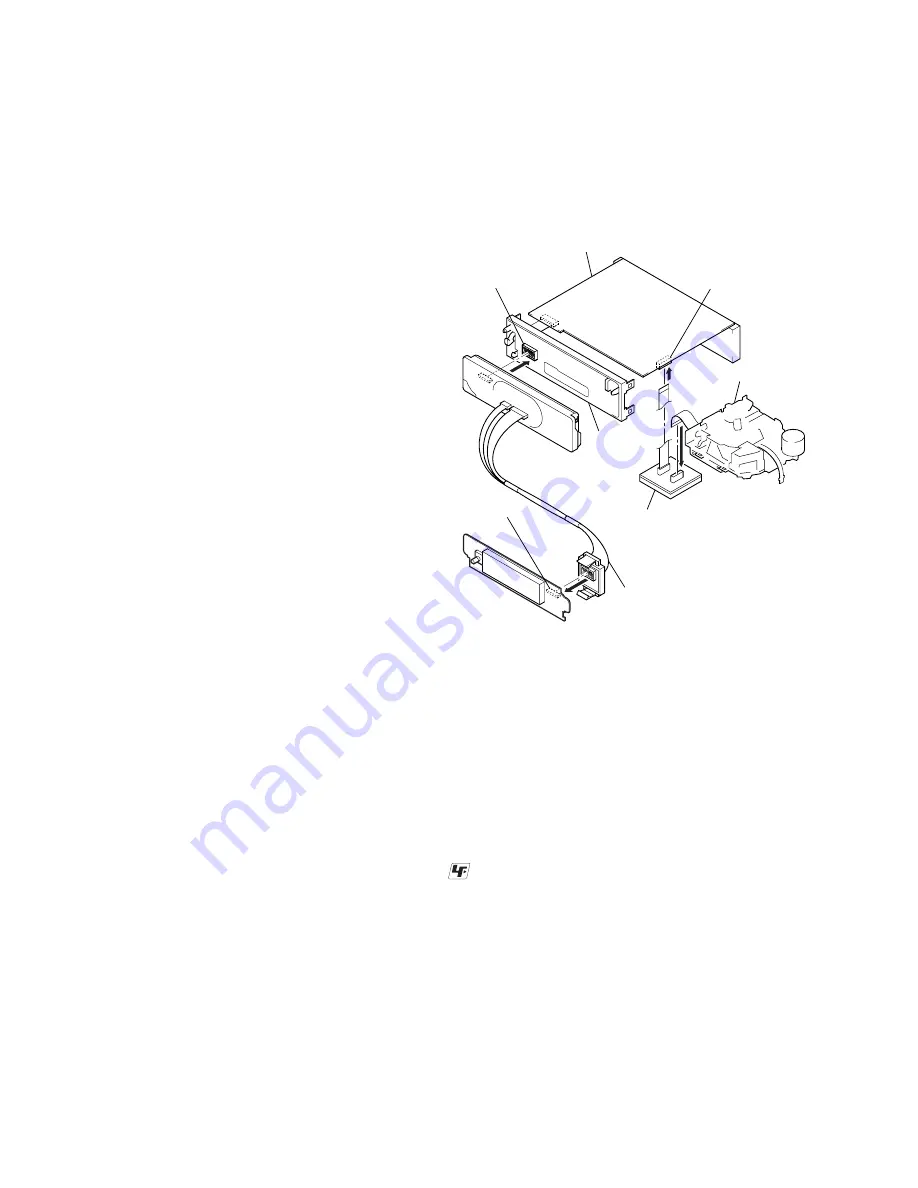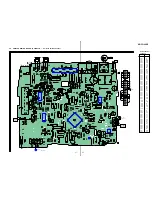
2
XR-F5100EE
Flexible Circuit Board Repairing
• Keep the temperature of the soldering iron around 270 ˚C dur-
ing repairing.
• Do not touch the soldering iron on the same conductor of the
circuit board (within 3 times).
• Be careful not to apply force on the conductor when soldering
or unsoldering.
Notes on chip component replacement
• Never reuse a disconnected chip component.
• Notice that the minus side of a tantalum capacitor may be dam-
aged by heat.
TABLE OF CONTENTS
SERVICING NOTES
.........................................................
2
1.
GENERAL
Location of Controls .......................................................
3
2.
DISASSEMBLY
2-1. Disassembly Flow ...........................................................
8
2-2. Sub Panel Section ............................................................
8
2-3. Mechanism Deck (MG-25L-136) ...................................
9
2-4. MAIN Board ...................................................................
9
3.
ASSEMBLY
3-1. Assembly Flow ................................................................ 10
3-2. Housing ........................................................................... 11
3-3. Arm (Suction) ................................................................. 11
3-4. Lever (LDG-A)/(LDG-B) ............................................... 12
3-5. Gear (LDG-FT) ............................................................... 12
3-6. Guide (C) ......................................................................... 13
3-7. Mounting Position of Capstan/Reel Motor (M901) ....... 13
4.
MECHANICAL ADJUSTMENTS
....................... 14
5.
ELECTRICAL ADJUSTMENTS
Tape Deck Section .......................................................... 14
Tuner Section .................................................................. 15
6.
DIAGRAMS
6-1. Note for Printed Wiring Boards and
Schematic Diagrams ....................................................... 16
6-2. Printed Wiring Board – MAIN Board – ........................ 17
6-3. Schematic Diagram – MAIN Board (1/3) – .................. 18
6-4. Schematic Diagram – MAIN Board (2/3) – .................. 19
6-5. Schematic Diagram – MAIN Board (2/3) – .................. 20
6-6. Printed Wiring Board – SUB Board – ........................... 21
6-7. Schematic Diagram – SUB Board – .............................. 21
6-8. Printed Wiring Board – DISPLAY Board – .................. 22
6-7. Schematic Diagram – DISPLAY Board – ..................... 23
7.
EXPLODED VIEWS
7-1. Shassis Section ................................................................ 27
7-2. Front Panel Section ......................................................... 28
7-3. Mechanism Deck Section (MG-25L-136) ...................... 29
8.
ELECTRICAL PARTS LIST
............................... 30
SERVICING NOTES
SERVICE POSITION
In checking the display board and main board, prepare two jigs
(connection cable J-2502-066-2 and
connection cable for F/P to main J-2502-071-1).
MAIN board
SUB board
(CNP801)
mechanism deck
MAIN board (CN351)
DISPLAY board
(CN901)
connect jig
(connection cable
for F/P to MAIN J-2502-071-1)
to the DISPLAY board (CN901) and
SUB board (CNP801).
connect jig
(connection cable J-2502-066-2)
to the MAIN board (CN351) and
mechanism deck.
sub panel
assy
UNLEADED SOLDER
Boards requiring use of unleaded solder are printed with the lead-
free mark (LF) indicating the solder contains no lead.
(Caution: Some printed circuit boards may not come printed with
the lead free mark due to their particular size)
: LEAD FREE MARK
Unleaded solder has the following characteristics.
• Unleaded solder melts at a temperature about 40 ˚C higher than
ordinary solder.
Ordinary soldering irons can be used but the iron tip has to be
applied to the solder joint for a slightly longer time.
Soldering irons using a temperature regulator should be set to
about 350 ˚C.
Caution: The printed pattern (copper foil) may peel away if the
heated tip is applied for too long, so be careful!
• Strong viscosity
Unleaded solder is more viscou-s (sticky, less prone to flow)
than ordinary solder so use caution not to let solder bridges oc-
cur such as on IC pins, etc.
• Usable with ordinary solder
It is best to use only unleaded solder but unleaded solder may
also be added to ordinary solder.



































